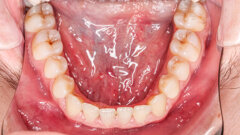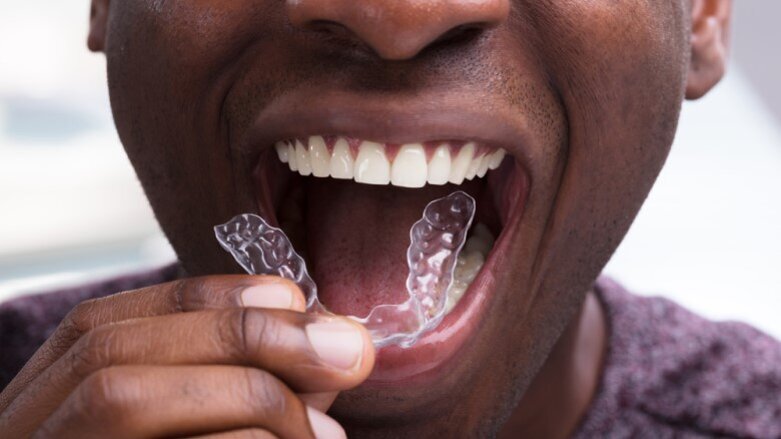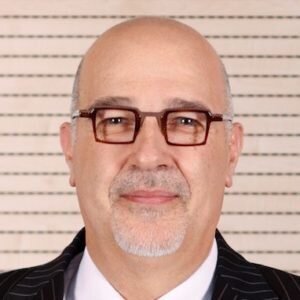The current progress in technology is making available ever newer solutions that allow for the treatment of a larger number of diseases. Moreover, the increase in access to information provides people with the possibility of informing themselves (although sometimes they are exposed to unreliable or fake news as well) about therapeutic solutions for their pathologies.
Self-medication—the treatment of common health problems with medicines especially designed to be used safely without professional supervision and labelled as effective (this is a particular problem in the field of alternative medicine)—is also increasingly influenced by the media, boosting the sales of such medical devices.
Recently in dentistry, bleaching agents, at-home laser devices, bite guards for temporomandibular joint disorders, and aligner treatments can be purchased online and sent directly to the patients’ homes. This trend has created new possibilities for treatment scenarios with catastrophic results. In any field of medicine, the treatment plan must follow a proper diagnosis. A diagnosis cannot be established without a doctor and the support of an accurate clinical examination, specific laboratory work and/or radiographic examination. The selection of a treatment plan by patients, who most likely have no medical knowledge, can be very risky and lead to iatrogenic complications.
Orthodontic aligner treatment, for example, is a good solution for patients: it is aesthetic, non-invasive and easy to wear, and may successfully correct a great number of malocclusions and dentoalveolar defects. In addition, it is based on 3-D technology, which is being used in several fields of medicine and dentistry with many promising perspectives. Nevertheless, only an honest and experienced clinician can explain and propose a correct treatment plan, as well contra-indicate in a specific clinical situation. Especially in light of technological advancements, it remains true that a functioning relationship between doctor and patient is the basis for any safe and successful medical treatment.
Tags:
Artificial intelligence (AI) has seen a rapid surge in popularity and accessibility in dentistry, and more broadly in healthcare. Publicly available AI ...
BOLOGNA, Italy: At the annual meeting of the Channel3 group of key opinion leaders, held this year in June in Bologna in Italy, the fourth P-I Brånemark ...
Everyone has done it—searching for symptoms on the Internet. Recent statistics show that searches for dental and mouth-related problems are very common in...
CHENNAI, India: The Indian Orthodontic Society (IOS) has submitted a complaint about direct-to-consumer (D2C) clear aligner therapy to the country’s ...
Aesthetic dentistry relies on professional trust, traditional wax-ups and artistic modifications of provisional restorations in the mouth to achieve the ...
MONTREAL, Canada: Hypnosis, long associated with stage performances and entertainment, is drawing attention for its clinical applications in the field of ...
CHICAGO, US: Fewer young dentists are buying practices early in their careers—but that does not mean they are abandoning the idea of ownership altogether....
Healthcare is not just about treatment; it is about people—and the words we use have the power to change lives. In fact, the language we use has ...
Bias is an intrinsic aspect of human cognition, and healthcare professionals—including those in dentistry—are not immune to its influence. Understanding...
KRIENS, Switzerland: For decades, dentistry has largely centred on intervention-based care—responding to disease rather than preventing it. However, a ...
Live webinar
Mon. 12 January 2026
9:00 am EST (New York)
Prof. Judith Jones D.D.S; M.P.H., Prof. Kakuhiro Fukai D.D.S., Ph.D, Dr. Bathsheba (Bethy) Turton
Live webinar
Wed. 14 January 2026
12:00 pm EST (New York)
Dr. Théo Laplane, Dr. Robert Gottlander DDS
Live webinar
Fri. 16 January 2026
12:00 pm EST (New York)
Live webinar
Mon. 19 January 2026
1:00 pm EST (New York)
Philipp Kopp, Michael Seeber
Live webinar
Thu. 22 January 2026
2:00 pm EST (New York)
Dr. Nicola M. Grande DDS, PhD
Live webinar
Wed. 28 January 2026
8:00 am EST (New York)
Live webinar
Wed. 28 January 2026
11:00 am EST (New York)
Prof. Dr. Jan-Frederik Güth



 Austria / Österreich
Austria / Österreich
 Bosnia and Herzegovina / Босна и Херцеговина
Bosnia and Herzegovina / Босна и Херцеговина
 Bulgaria / България
Bulgaria / България
 Croatia / Hrvatska
Croatia / Hrvatska
 Czech Republic & Slovakia / Česká republika & Slovensko
Czech Republic & Slovakia / Česká republika & Slovensko
 France / France
France / France
 Germany / Deutschland
Germany / Deutschland
 Greece / ΕΛΛΑΔΑ
Greece / ΕΛΛΑΔΑ
 Hungary / Hungary
Hungary / Hungary
 Italy / Italia
Italy / Italia
 Netherlands / Nederland
Netherlands / Nederland
 Nordic / Nordic
Nordic / Nordic
 Poland / Polska
Poland / Polska
 Portugal / Portugal
Portugal / Portugal
 Romania & Moldova / România & Moldova
Romania & Moldova / România & Moldova
 Slovenia / Slovenija
Slovenia / Slovenija
 Serbia & Montenegro / Србија и Црна Гора
Serbia & Montenegro / Србија и Црна Гора
 Spain / España
Spain / España
 Switzerland / Schweiz
Switzerland / Schweiz
 Turkey / Türkiye
Turkey / Türkiye
 UK & Ireland / UK & Ireland
UK & Ireland / UK & Ireland
 Brazil / Brasil
Brazil / Brasil
 Canada / Canada
Canada / Canada
 Latin America / Latinoamérica
Latin America / Latinoamérica
 USA / USA
USA / USA
 China / 中国
China / 中国
 India / भारत गणराज्य
India / भारत गणराज्य
 Pakistan / Pākistān
Pakistan / Pākistān
 Vietnam / Việt Nam
Vietnam / Việt Nam
 ASEAN / ASEAN
ASEAN / ASEAN
 Israel / מְדִינַת יִשְׂרָאֵל
Israel / מְדִינַת יִשְׂרָאֵל
 Algeria, Morocco & Tunisia / الجزائر والمغرب وتونس
Algeria, Morocco & Tunisia / الجزائر والمغرب وتونس
 Middle East / Middle East
Middle East / Middle East
















































To post a reply please login or register